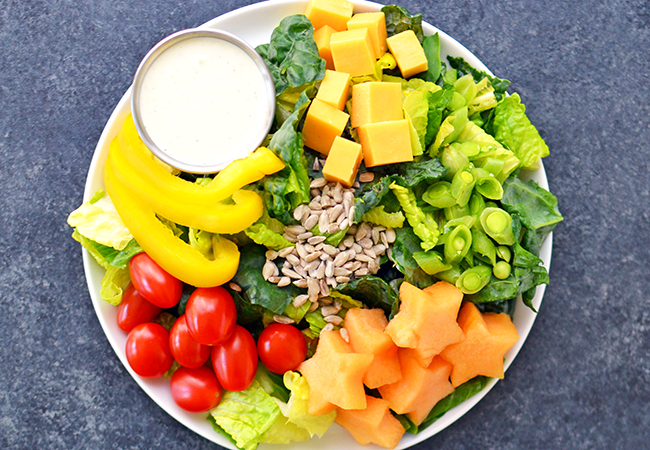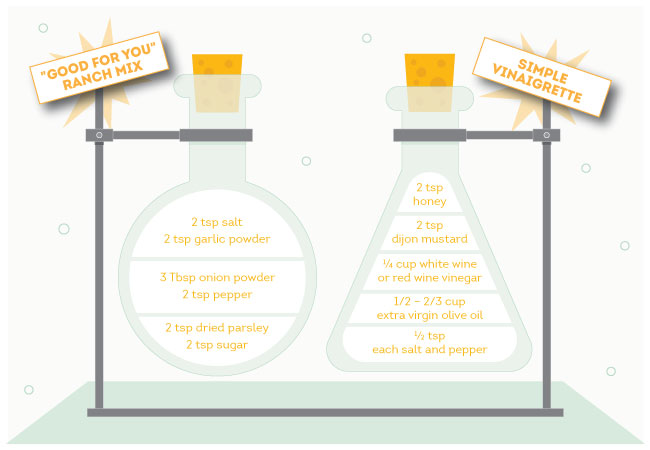Salad Science: Healthy Kitchen ‘Experiments’ For Kids

Plants need different times and climates to grow and develop their flavor—that’s why you’ll only find certain produce at certain times. Eating in-season ensures the best taste, and veggies don’t travel as far to your plate, so they’re more planet-friendly. Ready to experiment with the season’s best stuff? Assemble a delicious salad using only what’s in store right now!
- Dressing Keep it light and simple, let the salad be the star
- Protein punch Nuts or seeds, cheese or hard-boiled eggs
- Sweet veggie or fruit Tomatoes, melon or dried fruit
- Crunchy veggies Broccoli, carrots or pea pods
- Base of greens Tender in the spring, hearty in late summer Hydroponic year round!
Science Fact
Sun, water and soil work together to bring vegetables and fruits to peak nutrition and ripeness. The seasons dictate what to eat when. Natural sugars, starches and flavors develop over time. A vine-ripened tomato . . . there’s no substitute!

“Good for You” Ranch Mix
2 tsp salt
2 tsp garlic powder
3 Tbsp onion powder
2 tsp pepper
2 tsp dried parsley
2 tsp sugar
Directions
Shake all ingredients in a jar and store in the pantry as a dry mix. To make a dip, add 1 tbsp of mix to 1 cup mayonnaise and 1 cup sour cream or yogurt for dressing. Thin with buttermilk to desired consistency for dressing. Place all ingredients in a pint jar, cover tightly and shake, shake, shake.
Simple Vinaigrette
2 tsp honey
2 tsp Dijon mustard
¼ cup white wine or red wine vinegar
1/2 – 2/3 cup extra virgin olive oil
½ tsp each salt and pepper
Science Fun:
Oil and vinegar don’t like to stay together. Adding mustard helps make an emulsion and keeps ingredients blended.
Tip:
Have kids pick a different veggie to help prep and try out each week. They will be amazed what lights up their taste buds (and so will you).
